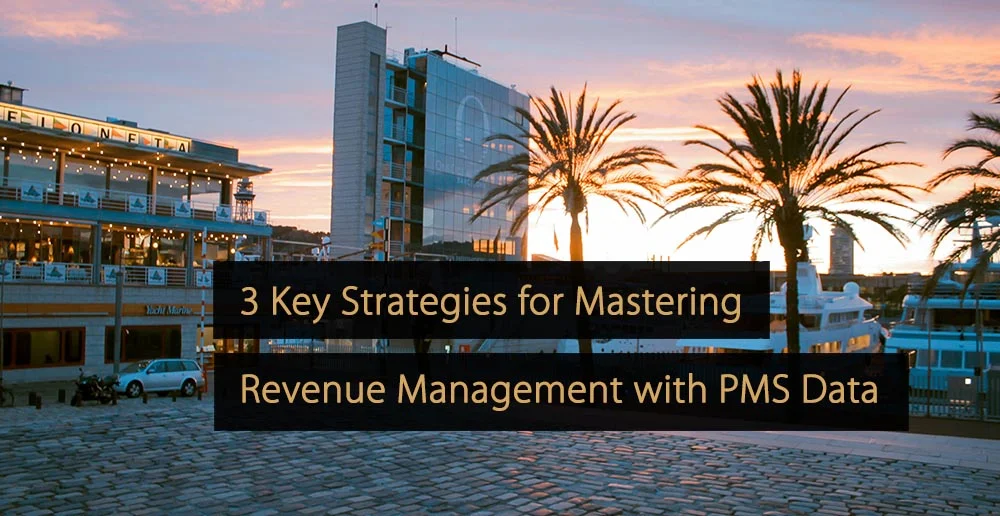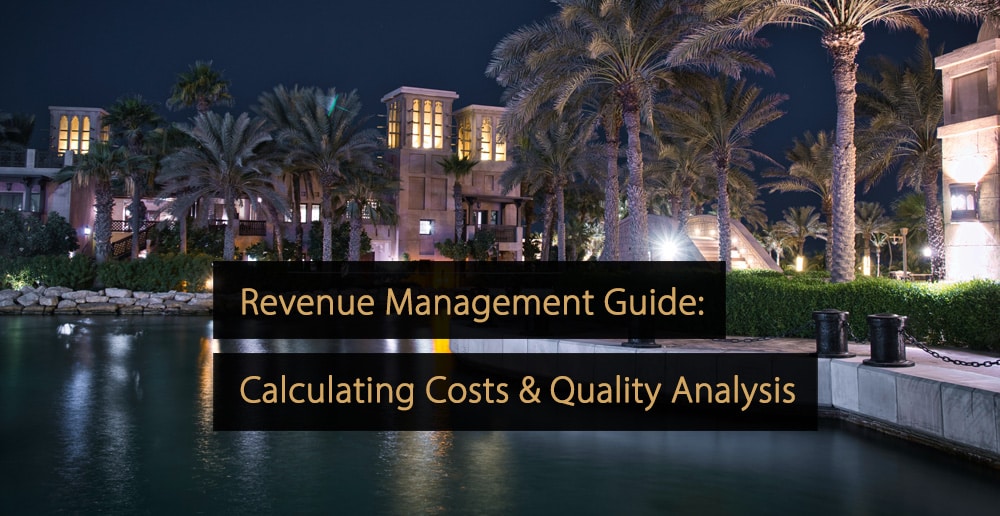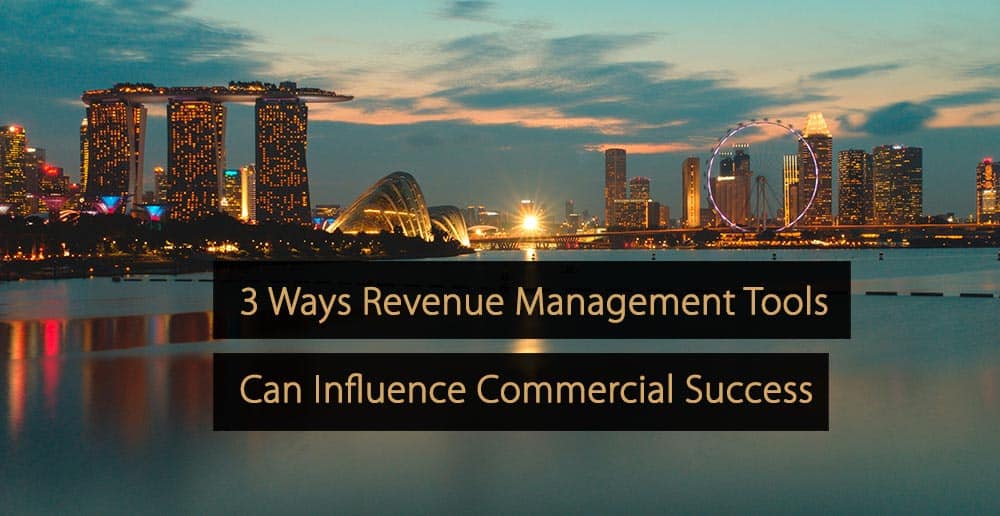Data fuels the commercial operation of a property and empowers hotel Revenue Managers to make informed decisions, outpace rivals, and ultimately boost profits. When discussing data, there’s no resource more crucial than your Property Management System (PMS).
How to Master Revenue Management with PMS Data: The 3 Strategies
Your PMS is the core of your hotel’s daily operations, monitoring everything from bookings and guest arrivals to room pricing and invoicing. However, it’s also a rich repository of information that can be utilized to fine-tune revenue generation and distribution tactics, and improve your hotel’s overall performance. The challenge is, are you leveraging its complete capabilities?
To ensure you maximize your PMS data in this article, we delve into some of the interesting insights that can be unearthed in your PMS data – information that, when efficiently employed, will ensure that you’re meeting your strategic goals and increasing your profit margins.
1. Identify the Key Factors Impacting Your Hotel’s Revenue
The initial step to unlocking the full power of your PMS data is recognizing your key business drivers.
Business drivers are the pivotal factors influencing your hotel’s revenue and profitability. This recorded data forms the basis for many strategic business decisions you must make.
Here are some of the business drivers you should be able to record and find in your PMS:
- Market segment – The category of the market grouping of rate codes, to which the reservation belongs, such as transient, group, etc.
- Rate code – The PMS rate code assigned to the reservation, such as BARBB, CORP1, etc.
- Room type – The rooms being consumed and their associated rate
- Channel – The distribution channel used to make the reservation
- Country – The country from which the guest is traveling
- Day of week stays – The days of the week for which the reservation is made
- Length of stay (LOS) – The number of room nights booked as part of the reservation
- Lead time – The amount of time in advance the reservation is made
- Company – Whether the reservation is linked to a company, potentially one you have already prospected for a negotiated rate
- Agency – The travel agent who made the reservation, such as CWT, Booking.com, etc.
Once you have identified your business drivers, you can utilize this information to refine your pricing, availability, LOS, and room type strategies.
For example, suppose you find that your hotel’s retail BAR-driven occupancy is higher on weekends. In that case, that’s a prime opportunity to amend your pricing strategy and elevate your weekend rates to garner more revenue.
By identifying these catalysts, you can also better understand which guest segments are most profitable for your hotel. Perhaps you find that your corporate guests generate more revenue than your leisure guests.
Equipped with this insight, you can concentrate your sales and marketing efforts on drawing more corporate guests or seek ways to improve your leisure services.
Moreover, understanding your business drivers can aid you in refining your distribution strategies. If you discover that direct bookings yield more revenue than online travel agencies (OTAs), it’s logical to prioritize direct bookings.
When you scrutinize your guest data more closely, you can begin to identify patterns and trends that indicate which guests are most likely to be interested in additional services or amenities.
You can then target upsell opportunities that are appropriately priced, boosting your revenue and providing your guests with a superior experience.
To ensure you’re examining your data correctly, setting clear naming conventions for aspects like rate codes, channel codes, and other data points is crucial. When your data is systematically organized and consistently labeled, you can trust that any insights you derive from your analysis are based on precise information.
All this data must be gathered at the front desk. Maintaining a record of a guest’s country of origin or using the correct rate code for guests will ensure the subsequent steps in your decision-making are based on reliable data.
Keeping clean records and gathering accurate information will provide the necessary transparency to formulate precise commercial strategies.
Ultimately, propelling commercial growth is not just about filling your hotel as much as possible but also strategically capitalizing on the highest-rated business to develop an optimized business mix. This will enable you to maximize your revenue daily to find incremental improvements for growth over the weeks, months, and years.
2. Keep a Close Eye on Your Pickup and Pace
How many rooms have we added since yesterday? How is this performance better than the same time last year? These are some of the crucial inquiries that you’ll likely have to routinely address, responses that are all contained in your PMS data.
Before you can formulate any strategic plans, you need some context. What business did you secure yesterday, and how does it influence your current business mix? How is it tracking against your projection or against the same period last year? Maybe you only had an increase in your static rate segments, and if you were to elevate your rates in dynamic segments, you would end up suppressing the increase on your higher-yielding rates.
Conversely, you might observe that your pick-up is filling up too rapidly from lower-paying segments or rate codes. If so, you could implement inventory or LOS restrictions to ensure you’re not selling too many rooms at lower rates.
Your pickup is something you should examine daily, and when doing so, it’s also crucial to evaluate and understand the type of business you have acquired.
Analyzing your pickup and pace can assist you in making informed decisions about pricing and inventory management.
For instance, if you notice that the pick-up is slow for a specific date, you can modify your commercial strategy to encourage bookings. Similarly, if you observe that pace is slower than the same period in the previous year, you can adjust your marketing efforts to attract more bookings.
Armed with this information, you can be more strategic in approaching certain dates, whether through inventory and pricing decisions, promotional and distribution strategies, or sales and marketing campaigns.
3. Optimize Strategies for Long-Term Success
To ensure that you’re meeting your revenue objectives, defining clear KPIs and monitoring them consistently is crucial.
By tracking metrics such as Revenue Per Available Room (RevPAR), Average Daily Rate (ADR), and occupancy rates, you can swiftly pinpoint areas where you need to modify your strategies to reach your revenue goals.
With detailed visibility of PMS data, which you can effectively utilize, you can propel commercial success by optimizing pricing, distribution, forecasting, room type utilization, booking window management, event strategies, or cancellation policies.
Pricing optimization involves examining historical data to recognize trends and patterns in market segments, rate codes, and room types that generate the most revenue. With this information and dynamic pricing, you can adjust your room pricing to meet market demand and extract the most from your highest-rated segments.
Similarly, distribution optimization involves examining historical data to identify the channels that generate the most revenue, such as OTA, direct booking, and metasearch channels.
By concentrating on these channels and reducing reliance on less profitable ones, you can then modify your distribution strategies to ensure you are not missing out and maximizing those that bring you the most revenue.
Effective Revenue Management involves classifying revenue streams into a hierarchy, from the most detailed level of individual reservations into rate codes and then into segments. Based on past performance and market trends, you can project expected revenue from here.
By allocating resources to different areas of the business based on strategic priorities and expected ROI, you can optimize the efficiency of your available inventory and maximize revenue for your hotel.
To develop strategies for enduring success, it is vital you get your forecasting right.
If you forecast accurately, you can predict future performance, meaning you will be able to adjust your inventory and pricing strategies accordingly. To create accurate forecasts, you must understand the factors that can impact demand, such as events in the area, seasonality, and economic conditions.
Your PMS houses all types of historical data and trends you can use to inform your forecasting. You can then adjust pricing and distribution strategies to maximize revenue during periods of high demand and minimize revenue loss during periods of low demand, while still factoring in variable market conditions to ensure your strategy effectively meets market demand.
Review and adjust your forecasts regularly to ensure that they remain accurate and relevant. This will allow you to make the necessary adjustments and ensure that your property is operating at peak efficiency, capitalizing on revenue opportunities and maximizing profitability in line with your KPIs.
Transform Your PMS Data into Profit with Business Intelligence
Your hotel’s PMS data is a gold mine of valuable information that can help you fine-tune your commercial strategies.
While having PMS data is one thing, leveraging your PMS data effectively is the real key to maximizing revenue and profitability in today’s fast-paced hospitality industry.
To truly drive revenue, you need the right information in front of the right people, enabling your entire team to make data-driven decisions on the fly. That’s where business intelligence software like Lighthouse comes in.
Business Intelligence software brings your PMS data to life by putting the right information front and center with a few clicks, saving hours of time on data collection and analysis.
It gives you both a high-level consolidated perspective and granular visibility into the trends and performance of each component of your business so that you can see exactly which market segment, rate plan, or other key business driver is working.
Whether you’re preparing for a request for proposal (RFP) or just a weekly revenue call, you can streamline all your PMS data to serve your whole commercial team.
Whitepaper: Predicting Hotel Demand with Short-Term Rental Data
This whitepaper will show you how to identify changes in short-term rental demand and adjust your pricing and marketing strategy for the appropriate periods ahead of your competition to accelerate growth.
Click here to download the whitepaper “Predicting Hotel Demand with Short-Term Rental Data”.
More Tips to Grow Your Business
Revfine.com is the leading knowledge platform for the hospitality and travel industry. Professionals use our insights, strategies, and actionable tips to get inspired, optimize revenue, innovate processes, and improve customer experience.Explore expert advice on management, marketing, revenue management, operations, software, and technology in our dedicated Hotel, Hospitality, and Travel & Tourism categories.








Leave A Comment